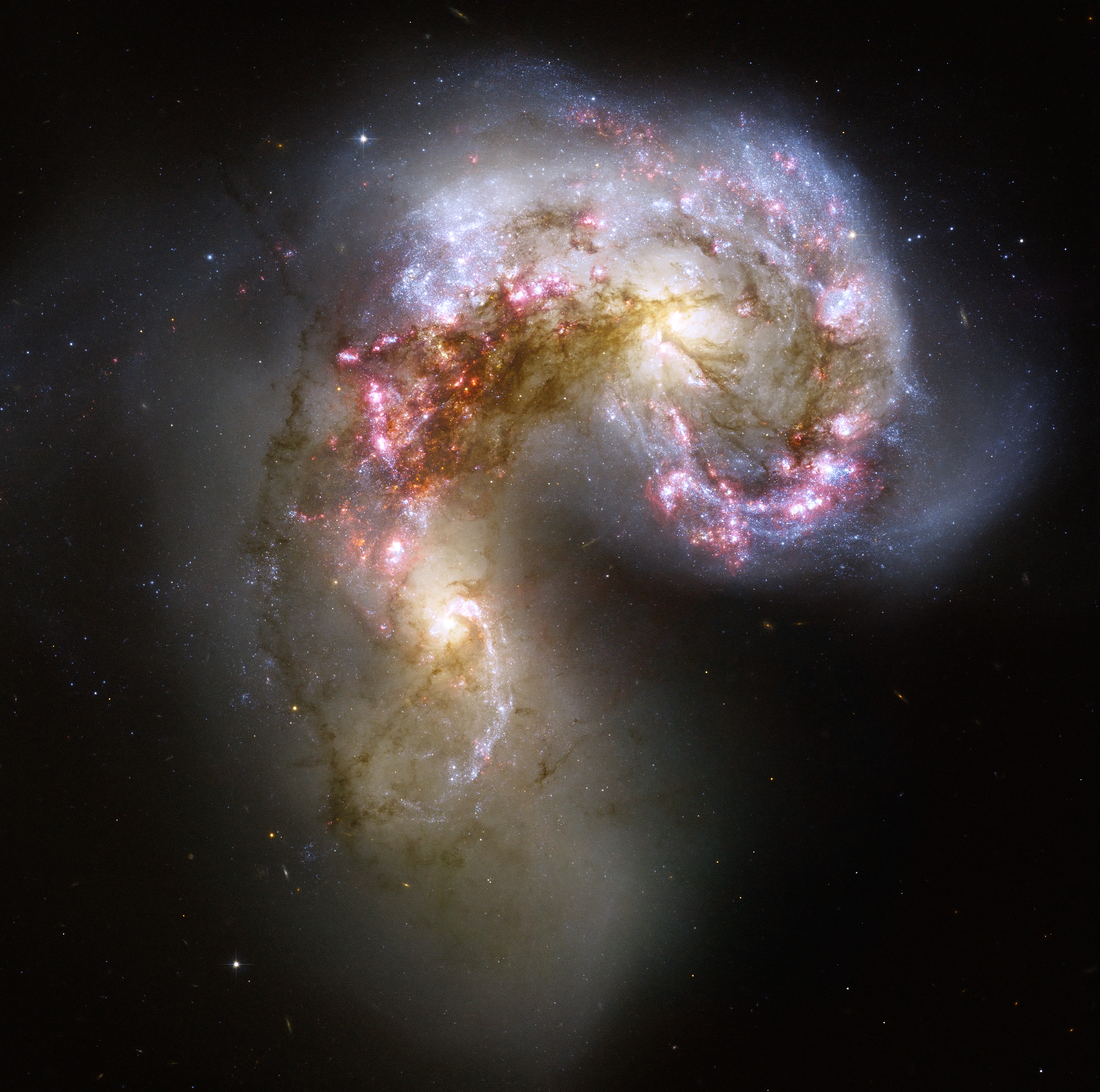When I do Planetarium shows, one of the things I like to talk about during the Milky Way – Andromeda collision that will happen in 70 Mlllion years, is the fact that very few stars will actually hit each other. Yet we still call it a ‘Galaxy collision.’ One of the questions I always get is “Will the Earth survive this?” I usually ask the audience.

The response is usually a unanimous ‘No way!”
And then I tell them how big Galaxies are and they can’t believe how unlikely it is that the solar system will be affected. Consider the fact that it takes us 9 years to get to Pluto on a rocket ship, and yet the solar system is still too ‘small’ for any major Galactic influence. Space is big.
We know that stars collide. Stars called Blue Stragglers are likely due to mergers of smaller stars in the dense stellar environment of Globular clusters. Globular clusters generally have an older population of stars, but blue stars are hotter and younger, and simply do not live as long. The only way to have a young stellar population in a globular cluster with no star-forming material is through collisions.
Did you Know? Most of the stars in the Universe are binary stars, meaning they actually consist of two stars closely orbiting each other. This is likely why we keep finding ‘hot Jupiter’ planets, which are planets larger than Jupiter but closer to their parent star than Mercury. These Planets are simply companions that were too small to undergo fusion and become stars.
One such binary system, MY Camelopardalis (not ‘Mine,’ but greek letters Mu and Gamma) consists of what we call eclipsing binaries. This means that, when viewed from Earth, these stars pass in front of each other.
Observations suggest that MY Cam is the most massive binary system observed, consisting of two blue O-type stars of mass 32 and 38 times the Sun. The crazy part is that they are orbiting each other in 1.2 days. That’s right, these stars are speeding around each other, and given their size, they formed nearly in contact with each other, and will merge before either of them can undergo any evolution.
Moving at approximately one Million Km/h, the stars are speeding around each other so quickly that they are elongated and distorted by centripetal forces.

This revelation provides evidence that the most massive stars in the Universe form through mergers of binaries. This could be the way that all stars more than 30 solar masses are formed.
Stars do merge, although most of these mergers are because of eclipsing binaries and the high density environments found in Globular Clusters. The big Galaxy collisions lead to relatively few mergers (perhaps one in a Billion), but with a large population of hundreds of Billions of stars, collisions still happen. Also, given the dense population of stars in the core of the merging Galaxies, it’s likely there is a lot more going on that we just can’t see yet.
It’s amazing that even though Astronomy is the oldest Science, we are still producing ground breaking new research that can change accepted conventions.
